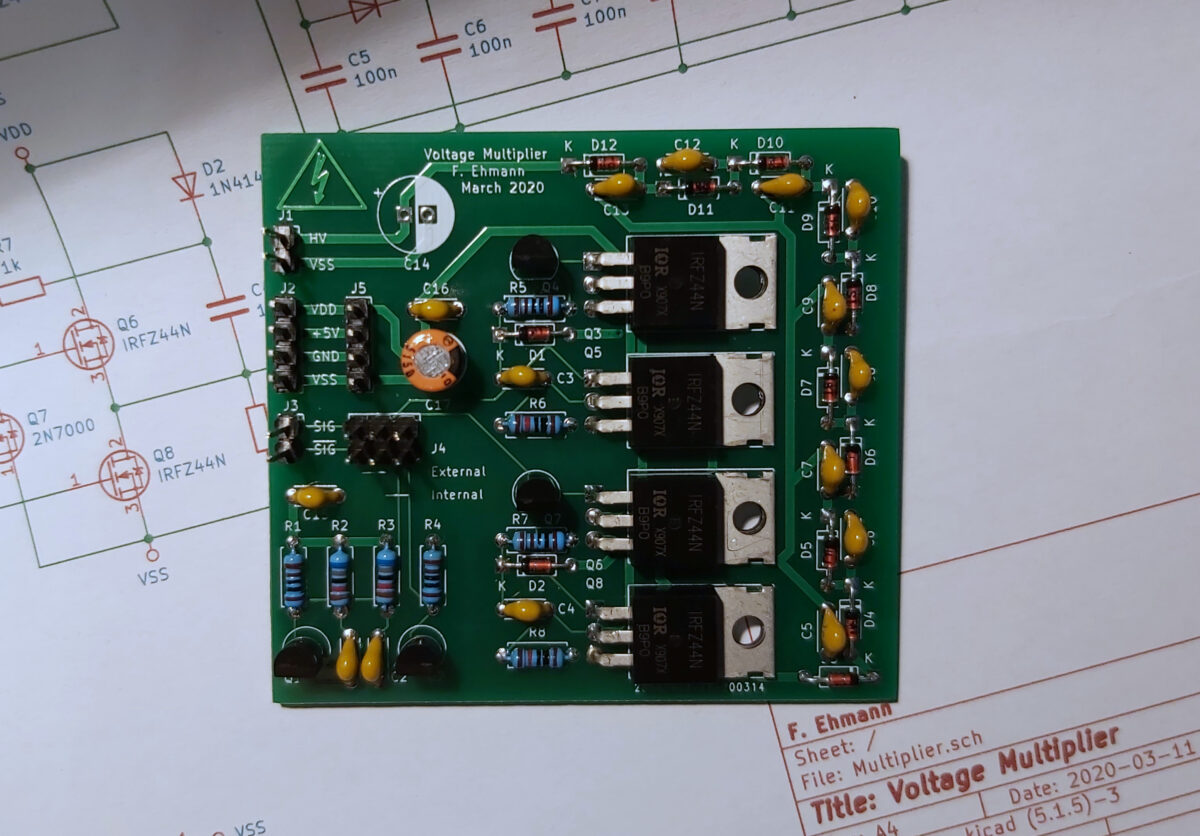In this article I will show you how I designed my voltage multiplier board, consisting of the actual multiplier circuit, the driver for the multiplier and an oscillator.
Voltage Multiplier Circuit
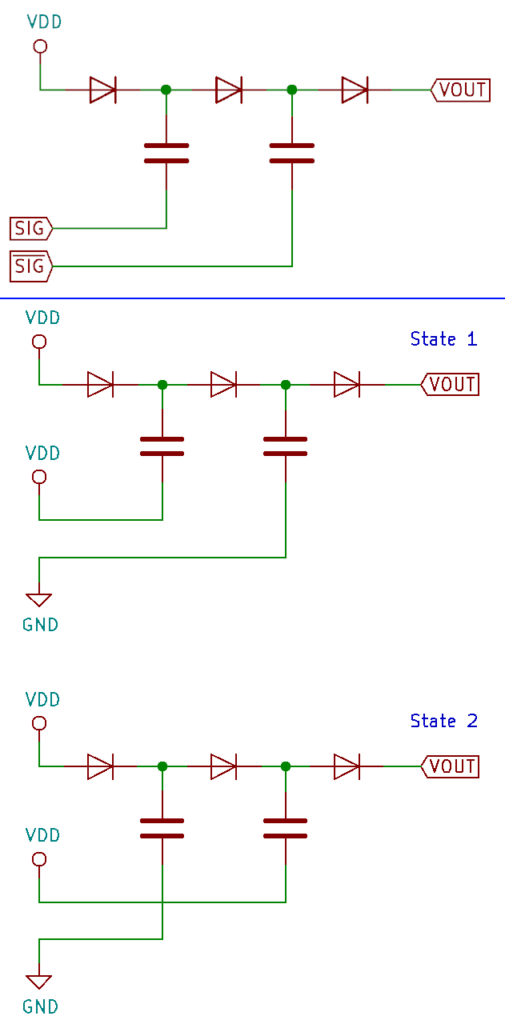
This circuit takes low input voltages like 5 V or 12 V and generates high voltages from it. For a 12 V input it generates over 100 V of output voltage, albeit with very low power. It is based on the Cockcroft-Walton Multiplier or Greinacher Multiplier, a simple circuit that has been used since the 1930s to generate high voltages, originally for particle accelerators. It uses the nonlinear properties of diodes to change the voltage reference of a charged capacitor. A simple 2-stage multiplier is shown on the right. The capacitors are connected to the intermediate stages on the one side and to a signal and its inverse on the other. This signal switches between the input voltage VDD and GND.
For continous operation let’s assume both capacitors are charged with a voltage of VDD. In state 1 the signal is at VDD and its inverse is at GND. Since the capacitor at stage one is charged, the potential at its upper side is 2x VDD. The input diode is not conducting and the capacitor of the second stage is charged by the capacitor of the first stage until both of them are charged to almost 2x VDD (ignoring the voltage drop of the diode). In state 2 the first capacitor is recharged through the input diode, while the second capacitor has a potential of VDD at its lower side and is still charged with a voltage of 2x VDD. Thus, the potential at the second stage is now almost 3x VDD. Each stage adds approximately the value of the input voltage to the output voltage. By using a larger number of stages high voltages can be achieved. Note that all current flowing out of the output was flowing in through the input diode and moved by altering the signal; in this sense this circuit can be considered a charge pump.
Oscillator

To drive this voltage multiplier we need the two signals. For this we can use a simple multivibrator circuit like it is shown on the left. This is a well known basic circuit, so I won’t go into much detail here. The values of the passive components make the multivibrator oscillate at around 1 kHz.
Driver Circuit
The outputs of oscillator circuits can be rather delicate and the signals are supposed to charge the capacitors of the output stage fast, so rather than using the outputs of the multivibrator directly I will buffer then with a bridge circuit made from power MOSFETs.
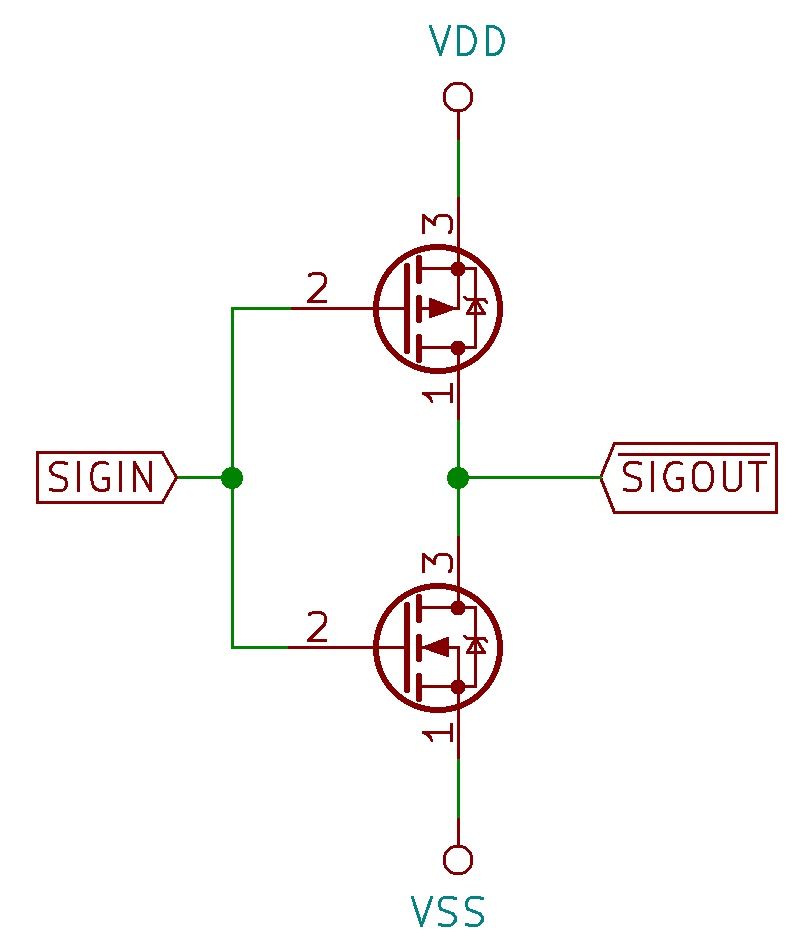
Your usual MOSFET bridge looks like the circuit on the right; the output is connected to the supply rails through a n-channel MOSFET on the low side and a p-channel MOSFET on the high side. Since the threshold voltage acts differently on the n- and p-channel MOSFETs we can even use the naked signal to drive both MOSFETs at once. Although this circuit is nice and simple it has a few disadvantages: p-channel MOSFETs tend to have a higher on resistance than their complementary n-channel counterparts and they are also usually more expensive. Most importantly, though, I didn’t have any lying around, so I’m doing something a bit more fancy: I’m bootstrapping an n-channel MOSFET to use it on the high side.
High Side N-Channel Switches
If you want to use an n-channel MOSFET on the high side you’ll quickly notice a problem: If you want to switch the MOSFET on, you have to pull the gate above the threshold voltage. However, as soon as the MOSFET is on, the source is effectively at the rail voltage VDD and the voltage difference between the gate and the source becomes zero. So, to maintain its on-state the MOSFETs gate has to be above the rail voltage. Sure you could just design your power supply to deliver a such voltage, but this is a lot of work and also PCB space and there is a simpler solution: Bootstrapping
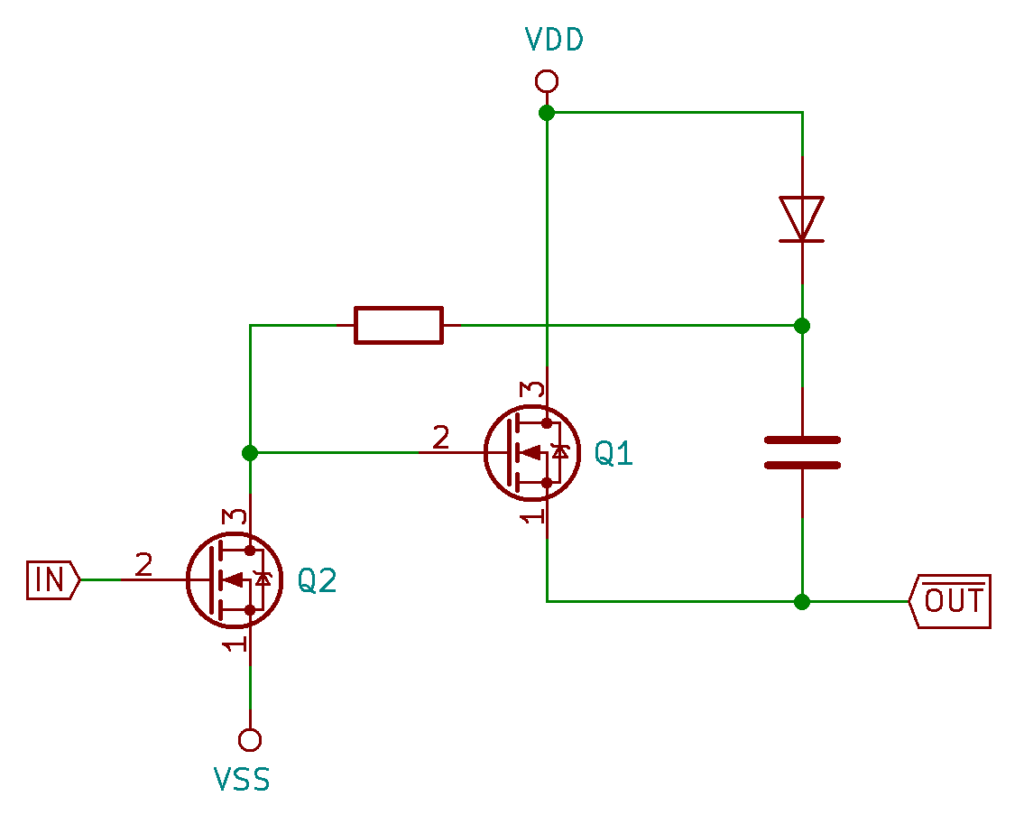
Bootstrapping works on the same principle as the voltage multiplier circuit. It uses diodes to move a charged capacitor to a higher potential. The circuit for bootstrapping a high-side n-channel MOSFET can be seen on the left. If the input signal is low, i.e. Q2 is off, the supply rail charges the small capacitor and Q1’s gate. As soon as Q1’s gate surpasses the threshold voltage Q1 switches on and the lower side of the capacitor is at the supply voltage VDD. Its upper side is now above the supply voltage and keeps this voltage, because the diode is not conducting. The upper side of the capacitor is connected to Q1’s gate, so Q1 remains switched on. If the input signal goes high, Q1’s gate and the capacitor are discharged through Q2 and Q1 switches off.
There are some things to keep in mind with this technique. Since capacitors don’t stay charged forever due to leakage you can’t use this for stationary switching, but only for changing input signals. Another thing to keep in mind is to not choose the value of the capacitor too high or too low. If it is too high, the capacitor charges too slow compared to the gate of Q1 and the bootstrapped voltage will not be high enough. If it is too low, the bootstrapped voltage will be more vulnerable to leakage. A choice that works for me and my IRFZ44N MOSFETs with about 1.5 nF gate capacitance is to pick a 1 kΩ resistor and a 10 nF capacitor.
Furtheremore, note that all Q2 does is discharging Q1’s gate and the external capacitor so it doesn’t have to be a power MOSFET. I went with 2N7000 small-signal MOSFETs.
Bootstrapped MOSFET Bridge
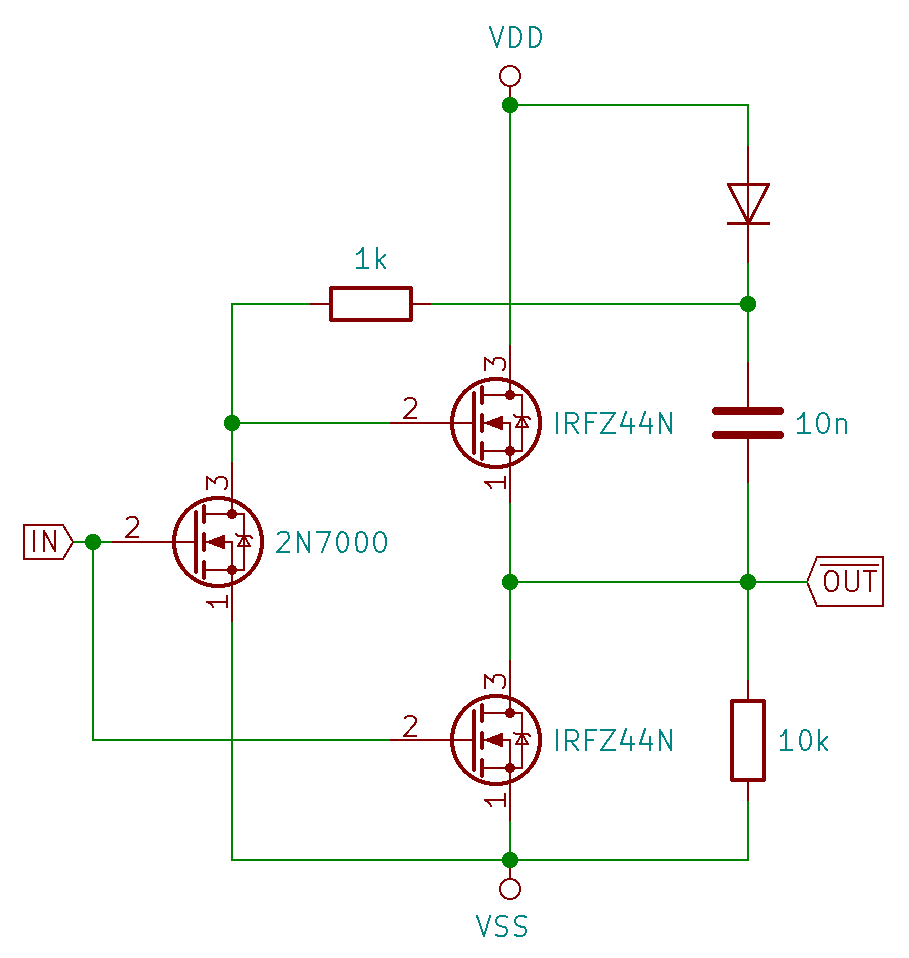
With the bootstrapped n-channel high-side MOSFET my final bridge circuit looks like this. It is a high-side n-channel MOSFET, combined with a simple low-side n-channel MOSFET and a pull-down resistor to keep the output at a well-defined potential during switching. Without the pull-down resistor Q1’s gate would be floating at a low input signal.
This driver generates nice and stable signals to drive the multiplier circuit.
Result
My final schematic looks like this:

To put a lid on this project and refine my PCB skills, I designed one for it and had it manufactured. With 5 V input voltage to the multivibrator and 12 V input voltage to the driver circuit I actually see an output voltage of over 100 V.

But this circuit is not perfect. There are a few things I want to point out:
- The output waveforms of the multivibrator look terrible.
- The IRFZ44N MOSFETs are propably too beefy for this job; I only chose them because they had the lowest on-resistance of all the MOSFETs I had at home.
- The operating frequency and the capacitor values in the voltage multiplier work, but they are not calculated to deliver some sort of optimum. They are more like educated guesses.
Despite these things I may revisit in the future, it was a fun and successful project in which I learned a lot!
